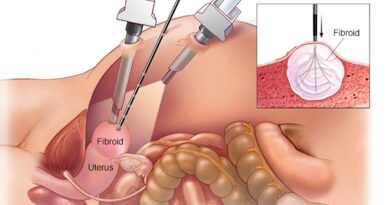Gonorrhea in Woman Symptoms – Doctor Tips
Gonorrhea is a sexually transmitted infection (STI) that can infect both men and women. It is caused by the bacterium Neisseria gonorrhoeae. Gonorrhea is usually spread through sexual contact with an infected person.
Woman may have no symptoms of gonorrhea, or they may have mild symptoms that go unnoticed. The most common symptom in woman is a burning sensation when urinating. Other symptoms may include vaginal discharge, itching, or bleeding between periods.
If left untreated, gonorrhea can cause serious health problems such as pelvic inflammatory disease (PID) in woman. PID can lead to infertility, ectopic pregnancy, and chronic pain.
Gonorrhoea | Top Symptoms Experienced by Men and Women | Gonorrhea (USA)
If you think you might have gonorrhea, it’s important to see a doctor as soon as possible. This STI is caused by the bacteria Neisseria gonorrhoeae, and can cause serious health problems if left untreated.
In women, gonorrhea can infect the cervix, uterus, and fallopian tubes.
Symptoms may include:
-Abnormal vaginal discharge that may be yellow or green in color
-Painful urination
-Vaginal bleeding between periods
– Pelvic pain or tenderness
-Burning sensation during intercourse
If you experience any of these symptoms, it’s important to see a doctor right away. Gonorrhea is often asymptomatic in women, so even if you don’t notice any symptoms yourself, it’s important to get tested if you think you may have been exposed to the bacteria. Gonorrhea is easily treated with antibiotics, but if it goes untreated it can cause serious health problems like pelvic inflammatory disease (PID) and infertility.
Chlamydia And Gonorrhea Symptoms Female
Chlamydia and gonorrhea are two of the most common sexually transmitted infections (STIs). Though they share many similarities, there are also some important differences between the two.
For starters, chlamydia is caused by the bacteria Chlamydia trachomatis, while gonorrhea is caused by Neisseria gonorrhoeae.
Both bacteria can infect the genitals, anus, or throat. And both infections are usually spread through sexual contact with an infected person.
However, there are a few key ways in which these two STIs differ.
For instance, chlamydia is often asymptomatic (meaning symptoms don’t show up), while gonorrhea tends to cause more noticeable symptoms.
In terms of symptoms that do appear, both men and women may experience burning during urination and unusual discharge from the penis or vagina if they have either infection. But women may also experience pain in the lower abdomen and bleeding between periods if they have chlamydia, while men may have swollen testicles if they have gonorrhea.
If left untreated, both chlamydia and gonorrhea can lead to serious health complications like infertility and pelvic inflammatory disease (PID). That’s why it’s so important to get tested for STIs regularly – especially if you’re sexually active – and to practice safe sex (using condoms) to reduce your risk of infection.
Gonorrhea in Women
Gonorrhea is a bacterial infection that affects both men and women. It is transmitted through sexual contact with an infected person. In women, gonorrhea can infect the cervix, uterus, fallopian tubes, and ovaries.
This can lead to pelvic inflammatory disease (PID), which can cause infertility. Gonorrhea can also cause ectopic pregnancy (pregnancy outside the uterus).
Symptoms of gonorrhea in women may include: burning sensation when urinating; increased vaginal discharge; bleeding between periods; and pain during intercourse.
If left untreated, gonorrhea can spread to other parts of the body and cause serious health problems.
If you think you may have been exposed to gonorrhea, it’s important to see a doctor right away for testing and treatment. Gonorrhea is treated with antibiotics.
Early diagnosis and treatment is important to prevent serious health complications from occurring.
Symptoms of Gonorrhea in Men
Gonorrhea is a sexually transmitted infection (STI) that can cause serious health problems if left untreated. Gonorrhea is caused by the bacterium Neisseria gonorrhoeae, which can infect both men and women. The most common symptom of gonorrhea in men is a burning sensation when urinating.
Other symptoms may include:
-White, yellow, or green discharge from the penis
-Painful or swollen testicles
-Burning sensation during ejaculation
If you have any of these symptoms, it’s important to see a doctor or other healthcare provider as soon as possible so you can be treated and avoid any complications. Gonorrhea can be cured with antibiotics, but it’s important to take all of the medicine prescribed to you even if your symptoms go away.
What Causes Gonorrhea
Gonorrhea is a sexually transmitted infection (STI) that can infect both men and women. It is caused by the bacteria Neisseria gonorrhoeae, which can grow and multiply easily in warm, moist areas of the body, such as the:
-urethra (the tube that carries urine from the bladder to outside the body)
-vagina
-cervix (opening to the uterus)
-rectum
-throat
You can get gonorrhea by having unprotected vaginal, anal, or oral sex with someone who has it. A mother can also give it to her baby during childbirth.
Gonorrhea is a very common STI – in fact, it’s one of the most frequently reported STIs in the United States. According to CDC data , there were more than 468,000 cases of gonorrhea reported in 2016 – a 18.5% increase from 2015 . Young adults aged 15-24 years old are particularly affected by this STI; nearly two thirds of all reported gonorrhea cases occur in this age group .
Left untreated , gonorrhea can cause serious health problems for both men and women. In women, untreated gonorrhea can lead to pelvic inflammatory disease (PID), which can damage the fallopian tubes and other reproductive organs and cause infertility . In men, untreated gonorrhea may spread into the blood stream and joints , causing disseminated gonococcal infection (DGI).
DGI often leads to permanent joint damage . Gonorrhea can also be passed from an infected mother to her baby during childbirth , resulting in eye infections , blindness , or pneumonia for the infant .
Fortunately,gonorrhea is treatable with antibiotics .
If you think you might have been exposed to gonorrhea or are experiencing any symptoms – such as unusual discharge from your vagina or penis , burning when urinating , or pain/swelling in your rectum or throat – it’s important to see a healthcare provider right away so you can get tested and start treatment if necessary.
Gonorrhea Treatment
Gonorrhea is a sexually transmitted infection (STI) that can cause serious health problems if left untreated. Luckily, gonorrhea is easily treated with antibiotics.
If you think you have gonorrhea, it’s important to see a doctor or other healthcare provider right away so you can get the treatment you need.
If left untreated, gonorrhea can cause serious health problems, including infertility (not being able to get pregnant), pelvic inflammatory disease (PID), and an increased risk for getting HIV – the virus that causes AIDS.
Gonorrhea is caused by bacteria called Neisseria gonorrhoeae. These bacteria are found in the genital fluids of people who have gonorrhea.
They can also be found in the rectum, throat, and eyes of people with gonorrhea. You can get gonorrhea by having unprotected vaginal, anal, or oral sex with someone who has it. A mother can also pass it to her baby during childbirth.
Symptoms of gonorrhea may not appear for weeks or even months after infection; however, some people do experience symptoms within 2-5 days after infection occurs. Symptoms in men include burning when urinating and discharge from the penis that is white, yellowish, or greenish in color and may be accompanied by a strong odor. Men might also experience pain or swelling in their testicles at some point during their illness although this is more common among infants infected at birth than adults infected later on in life.
Symptoms experienced by women include burning when urinating; increased vaginal discharge that may be yellowish or bloody; and bleeding between menstrual periods or after sexual intercourse..
Gonorrhea Discharge
Gonorrhea discharge is a common symptom of this STD. It can be watery, milky, or yellow in color. It may have a foul smell and can be accompanied by burning during urination.
Gonorrhea discharge can also lead to itching and swelling in the genital area. If you experience any of these symptoms, it’s important to see a doctor right away as gonorrhea can lead to serious health complications if left untreated.
Gonorrhea Test
If you think you might have gonorrhea, it’s important to get tested. Gonorrhea is a sexually transmitted infection (STI) that can cause serious health problems if it’s not treated.
There are two types of tests for gonorrhea: a nucleic acid amplification test (NAAT) and a culture.
NAAT is the most accurate test and is the one that’s most often used. A culture can sometimes be used if your doctor thinks you might have an uncommon strain of gonorrhea or if you’re pregnant.
You can get a gonorrhea test at your local Planned Parenthood health center, some other clinics, and from some private providers.
The test only takes a few minutes and is usually done with a swab of the inside of your vagina or penis. You’ll get results in 1-2 days.
If you have gonorrhea, it’s important to get treated right away so you don’t have any long-term health problems.
Gonorrhea can be cured with antibiotics.
Is Gonorrhea Curable
Gonorrhea is a sexually transmitted infection (STI) that can be passed from one person to another through unprotected sex. The good news is that gonorrhea is curable with the right treatment.
If you have gonorrhea, it’s important to see a doctor or other healthcare provider so you can get the right antibiotic medication to treat the infection.
Without treatment, gonorrhea can lead to serious health problems, including infertility (not being able to get pregnant), pelvic inflammatory disease (PID), and an increased risk for HIV.
It’s also important to let your recent sexual partners know that you have gonorrhea so they can be tested and treated if necessary. This will help prevent the spread of the infection.

Credit: www.biocodexmicrobiotainstitute.com
How Long Does It Take for Gonorrhea to Show Up in Females?
Gonorrhea is a sexually transmitted infection (STI) that can infect both men and women. It is caused by the bacteria Neisseria gonorrhoeae, which can grow and multiply easily in the warm, moist areas of the reproductive tract, including the cervix (opening to the womb), uterus (womb), and fallopian tubes (egg canals) in women, and in the urethra (urine canal) in women and men. The incubation period for gonorrhea is usually 2 to 5 days from exposure to when symptoms first appear, but it may take as long as 30 days for some people to develop symptoms.
In females, early signs and symptoms of gonorrhea may include: -A burning sensation when urinating -More frequent urination than usual
-Painful or swollen genitals -Vaginal discharge that may be yellowish or bloody If left untreated, gonorrhea can spread throughout the body and cause serious health problems such as pelvic inflammatory disease (PID) in women, which can lead to infertility or chronic pelvic pain; epididymitis in men, which can lead to infertility; and joint infection.
Gonorrhea can also increase your risk of contracting HIV. Therefore, if you think you may have been exposed to gonorrhea, it is important to see a healthcare provider so that you can be tested and treated if necessary.
What are 4 Symptoms of Gonorrhea?
If you’re wondering whether you have gonorrhea, here are four symptoms to look out for:
1. A burning sensation when urinating
2. Increased vaginal discharge
3. Bleeding between periods or after sex
What Happens to a Woman With Gonorrhea?
If a woman has gonorrhea, it can cause pelvic inflammatory disease (PID). PID is a serious infection of the reproductive organs. It can lead to infertility and other long-term problems.
What Does the Beginning of Gonorrhea Feel Like?
Gonorrhea is a sexually transmitted infection (STI) that affects both men and women. It is caused by the bacteria Neisseria gonorrhoeae, which can be passed from one person to another through unprotected sex (vaginal, anal or oral). Symptoms of gonorrhea usually appear 2-5 days after infection, but may take up to 30 days to develop.
For women, the most common symptom of gonorrhea is burning during urination. Other symptoms may include: increased vaginal discharge; bleeding between periods; pain during sex; and/or pelvic pain. For men, the most common symptom of gonorrhea is burning during urination.
Other symptoms may include: penile discharge; painful or swollen testicles; and/or rectal pain or discharge. If left untreated, gonorrhea can lead to serious health problems including infertility, pelvic inflammatory disease (PID), and an increased risk of HIV infection.
If you think you might have gonorrhea, it’s important to see a healthcare provider as soon as possible for diagnosis and treatment.
Gonorrhea can be cured with antibiotics. The best way to prevent STIs like gonorrhea is to use condoms consistently and correctly every time you have sex.
Conclusion
There are many different symptoms of gonorrhea in women, and they can vary depending on the stage of the infection. The most common symptom is a burning sensation when urinating, which can be accompanied by pain and swelling in the vulva, vagina, or rectum. Other symptoms include abnormal vaginal discharge, bleeding between periods, and painful intercourse.
If left untreated, gonorrhea can lead to pelvic inflammatory disease (PID), which can cause infertility or an increased risk for ectopic pregnancy.




